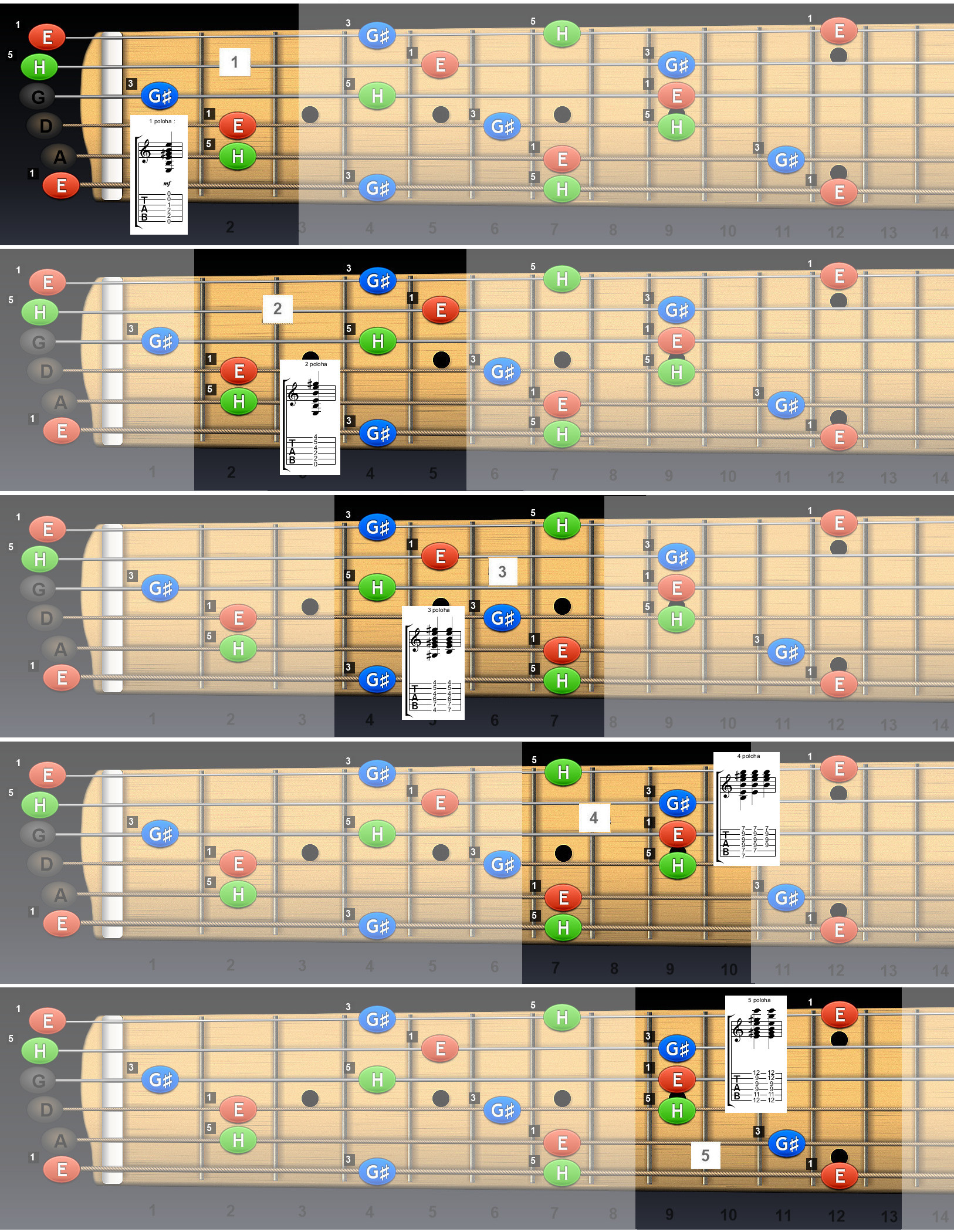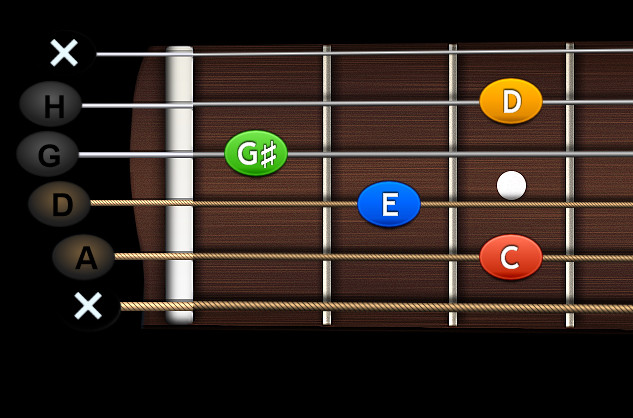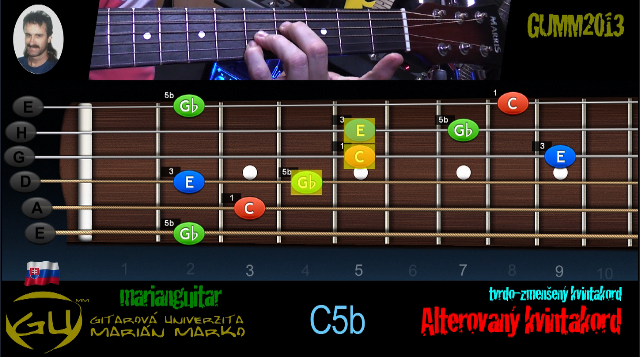Akord E dur – orientácia na hmatníku
Fingerboard orientation – chord E major
orientación del diapasón – acorde E mayor
stredoeurópske značenie / contrassegni dell’Europa centrale /Central European markings
(Las marcas angloamericanas se encuentran a continuación en el artículo)
(Anglo-American markings are below in the article)

Notový zápis a TAB k akordom v zvýraznenom poli zodpovedajú noty a TAB na pravej strane hmatníka. Niekde sa vyskytuje aj viacej možností. Tieto schémy môžete využiť aj pri cvičení arppegio. Ľavý horný index = označenie intervalu.


Rozbor k akordom na obrázku nižšie:
Ľavý horný index = označenie intervalu * Pravý horný index = doporučený prstoklad
1 / Ide o akoby základný hmat E dur, kde sa využíva vyznenie prázdnych strún E, h, e.
2 / Ukazovák hrá malé barré v 2 polohe na strunách A, D. Ostatné struny hrajú akoby základný hmat D dur.
3a/ Ide o veľký barré hmat (ukazovák hrá cez všetky struny ale pritláčať stačí na strunách E, g, e). Pri použití capodastera v 4 pozícii je tento hmat možné hrať aj ako základný hmat C dur.
3b/ Varianta hmatu 3a/ ale je ťažšie hrateľný bez kapodastera. Pri použití capodastera v 4 pozícii je tento hmat možné hrať aj ako základný hmat C dur – varianta 2.
4a/ Nehrá sa na strunách E, A. Ostatné struny hrajú ako základný hmat A dur ale 7 až 9 polohe
4b/ Nehrá sa na strune E. Ostatné struny hrajú ako základný hmat A dur ale 7 až 9 polohe.
4c/ Ukazovák hrá veľké barré v 7 polohe na strunách E, A, e. Ostatné struny hrajú ako základný hmat A dur.
5a/ Ukazovák hrá malé barré v 9 polohe na strunách d, g, h. Ostatné struny hrajú akoby základný hmat G dur.
5b/ Je to varianta hmatu 5a/ avšak na strune „H“ sa hrá tón „h“ (kvinta akordu), G dur varianta 2.

*
anglo-americké značenie /Contrassegni anglo-americani /Anglo-American markings
The notation and TAB for the chords in the highlighted field correspond to the notes and TAB on the right side of the fingerboard. Somewhere there are more options. You can also use these schemes when practicing arppeggio. Left superscript = interval designation.
La notación y TAB para los acordes en el campo resaltado corresponden a las notas y TAB en el lado derecho del diapasón. En algún lugar hay más opciones. También puede utilizar estos esquemas cuando practique el arpegio. Superíndice izquierdo = designación de intervalo.


Analysis of the chords in the image below: Left superscript = interval designation * Right superscript = recommended fingering
Análisis de los acordes en la siguiente imagen:
Superíndice izquierdo = designación del intervalo * Superíndice derecho = digitación recomendada
1 / It is like a basic touch of E major, where the tone of the empty strings E, b, e is used.
2 / The index finger plays a small barre in the 2nd position on strings A, D. The other strings play as if the basic touch of D major.
3a/ This is a large barre touch (the index finger plays over all the strings, but it is enough to press down on the E, g, e strings). When using the capodaster in position 4, this key can also be played as a basic C major key.
3b/ Variant of touch 3a/ but it is more difficult to play without a capo. When using the capodaster in position 4, this key can also be played as a basic C major key – variant 2.
4a/ It is not played on the E, A strings. The other strings are played as the basic key of A major.
4b/ It is not played on the E string. The other strings are played as the basic key of A major.
4c/ The index finger plays a big barre in the 7th position on the E, A, e strings. The other strings play as the basic key of A major.
5a/ The index finger plays a small barre in the 9th position on the d, g, b strings. The other strings play like the basic touch of G major.
5b/ It is a variant of 5a/ but on the string „B“ the tone „b“ (the fifth of the chord) is played, G major variant 2.






